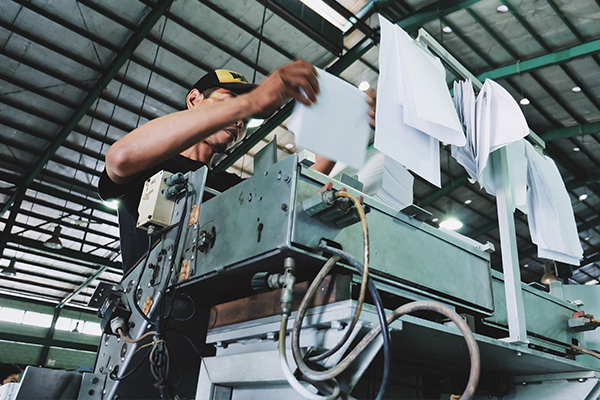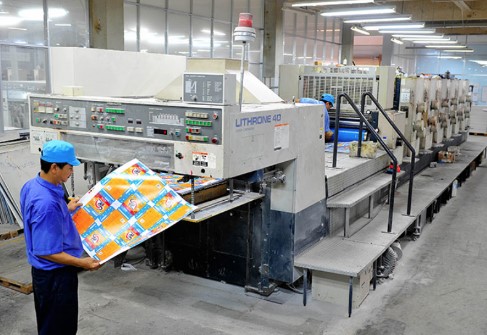
Printing brought a revolutionary change in how information was gathered and distributed across all domains before the pandemic. And it still is getting monumental changes. However, the latest reports and analysis indicate that the global pandemic profoundly disrupted the industry marking a staggering fall. As per Smithers’ latest analysis, the global printing industry fell from $814 billion in 2019 to $743 billion in 2020.

Image source- Google
With this impact in printing and the size of the A4 sheet, publications' work declined in trillions. To be precise, Smithers reported in 2021 exclusive data from its study, which revealed the total decline in A4 print stood at 41.4 trillion (2020) from 47.8 trillion (2019).
Technology visionaries state that while printing is advancing at a staggering rate, businesses need to begin re-investing in building state-of-the-art informative papers that bridge the gap between consumers and firms.
1. Printing in Education
The challenge to reopen schools and universities has kept books and publications on hold for almost two years. As the schools prepare to open up, there will be a requirement for these organizations to lay emphasis on their budgets and switch to more headset strategies. As children already feel distant from traditional modes of learning such as books, institutions can focus on enhancing the look of their curricula by involving high-end graphics in books.
Applying graphics and publication printing at all levels of education will facilitate in the following ways:
An essential step towards re-engaging students can involve incorporating 3d printing in textbooks. Below is an example of how 3d printed books can offer higher engagements.

Image source- Google
According to a survey conducted by 3ders.org, approximately 77 percent of teachers intend to increase the usage of 3D printers for lessons. Teachers can now use 3d printed books to clear hard-to-learn concepts that usually require the classroom approach, including subjects science, history, and more.
Teachers can focus on concept clarification by incorporating experiential learning and offer students a hands-on experience of fossils, bones, and historical artifacts, which are too fragile for students to handle.
2. Using Printing to Increase Consumer Retention
According to a printing industry expert Joseph W. Webb, changes in technology have well continued to create significant opportunities and challenges. In his book, This Point Forward: The New Start the Marketplace Demands, Webb indicates how businesses can take advantage of these changes for years to come.
The printing industry has enabled businesses to incorporate digital printing on a wide range of substrates, including using inks and papers for promotional solutions to increase profits.
Here are seven ways top printing companies attract new consumers
Equally encouraging is to see companies benefit in attracting capital even in the uncertain markets amidst Covid-19. It is giving the companies the agility to step out of traditional chains of consumer retention. Global opportunities in the printing industry have motivated major businesses to start looking at printing become an essential part of marketing for obvious reasons like:
3. Museums will need to adopt 3d printing
Museums are dedicated places to preserve the tangible treasures of humankind that are unique and worth conserving. Printing was touted as the most significant innovation. While traditional print techniques included etching and engraving, digital printing embraces revolutionary tools to create engaging haptic experiences. The biggest challenge for museums is to adopt procedures that re-engage visitors.
The benefits of printing in museums are plentiful as a learning tool for the audience. The Victoria and Albert Museum, London, has a history of viewing interaction as a critical component to enhance the visitor experience. In 2018, Victoria and Albert Museum joined hands with GOSH Arts, where they began using 3d printing to build structures to create a more interactive experience for visitors.
In addition, The Semitic Museum, Harvard University, 3d printing can have huge implications in the world of conservation. According to museumnext.com- “Artefacts that have been damaged by war, weather or simply the passage of time can be painstakingly pieced back together.”
The challenges of operating the printing business during lockdown have been severe. Some of these restrictions have had a profound effect on the purchasing patterns of consumers. While accelerating market trends for 2021 indicate gradual movement to normalcy, the impact of decline will be reflected in the market in terms of jobs.
Let us help you make the most of your marketing budget, call today with your creative and print design challenges: 1.800.457.2899